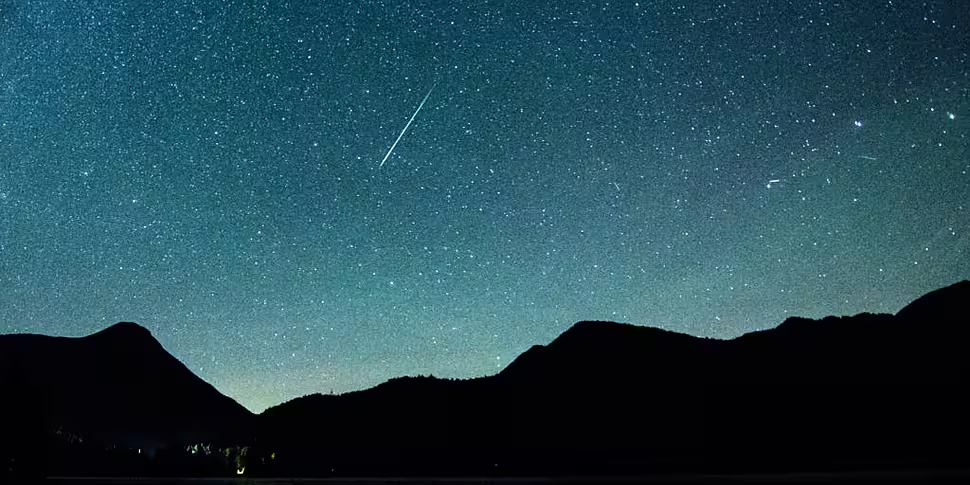The most visible meteor shower of the year will be in Ireland’s skies over the next two nights.
The Perseids will bring with it 20-times more shooting stars than a normal night.
They are considered the best meteor shower of the year, with very fast and bright meteors.
Perseids frequently leave long 'wakes' of light and colour behind them as they streak through Earth's atmosphere.
They are also known for their fireballs.
Fireballs are larger explosions of light and colour that can persist longer than an average meteor streak.
This is due to the fact that fireballs originate from larger particles of comet material.
Space commentator Leo Enright told Newstalk Breakfast: "It's one of those things where if there's a clearance in the sky - and I think there will be tonight and probably tomorrow night, to judge from Met Éireann - it's definitely worth going out because I can guarantee you that you will see a shooting star.
"It's the Perseids: they are a meteor shower that happen every year at this time, in August.
"Actually in the Middle Ages, the Christians called it 'the tears of St Laurence' and they had some big story about some martyr called St Laurence."
"Until recently, it wasn't known what caused it - but we do now know that it's the rubble left behind by a comet that passed this way a long time ago".
"What we're looking at is tiny flecks of dust, some pieces - which will be much more dramatic - might be the size of a grape.
"But nothing much bigger than a golf ball... each piece will hit the atmosphere at over 200 kilometres an hour.
"So this thing is really moving, well actually it's the Earth that's moving.
"We're actually ploughing in to this lump of rubble that orbits the sun - it's the remnants of a comet called Swift-Tuttle that hasn't been in these parts for many decades, and won't be back for another hundred years."
In terms of best viewing times, he said: "If you go out at 10.00pm, you might see the brighter meteors, 11.00pm [you are] definitely more likely to see something - looking to the north-west, generally".
The Swift-Tuttle comet was discovered in 1862 by Lewis Swift and Horace Tuttle.
It is a large comet, with a nucleus of 26 kilometers across.
This is almost twice the size of the object thought to have led to the demise of the dinosaurs.









